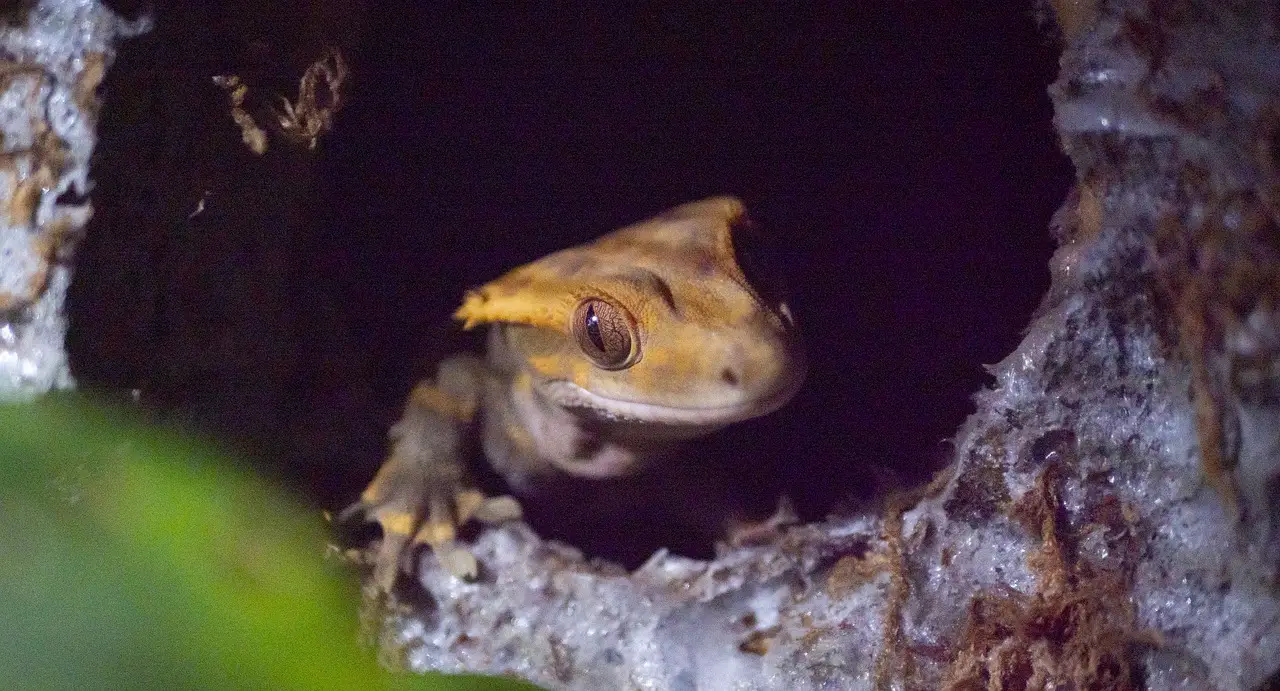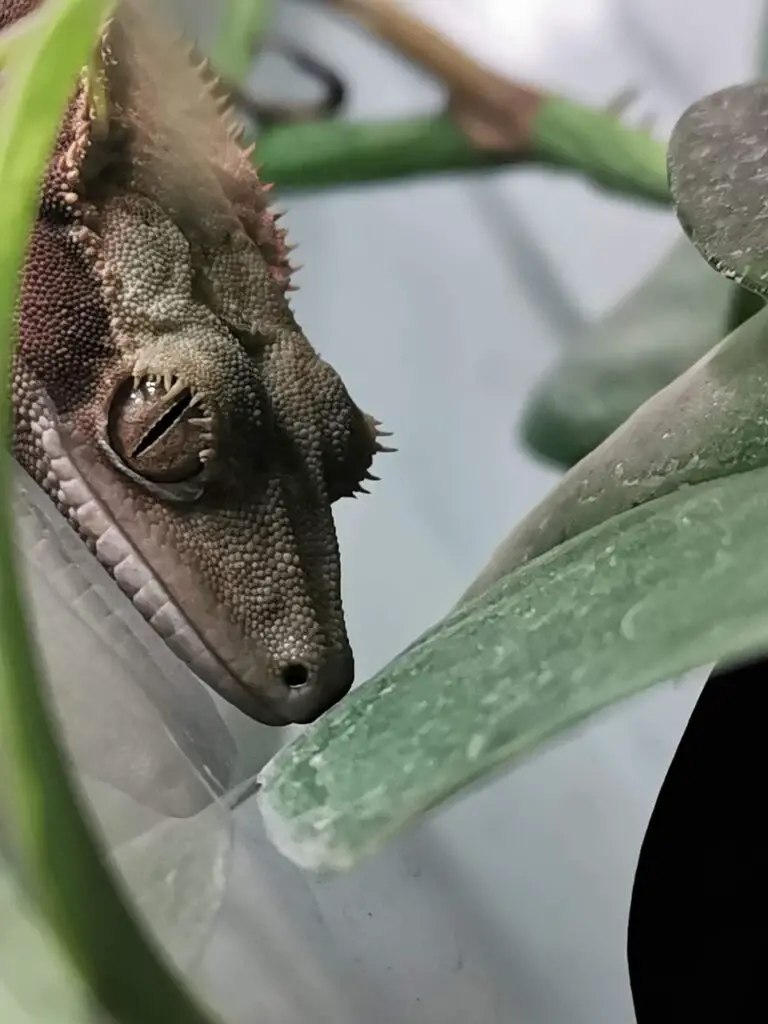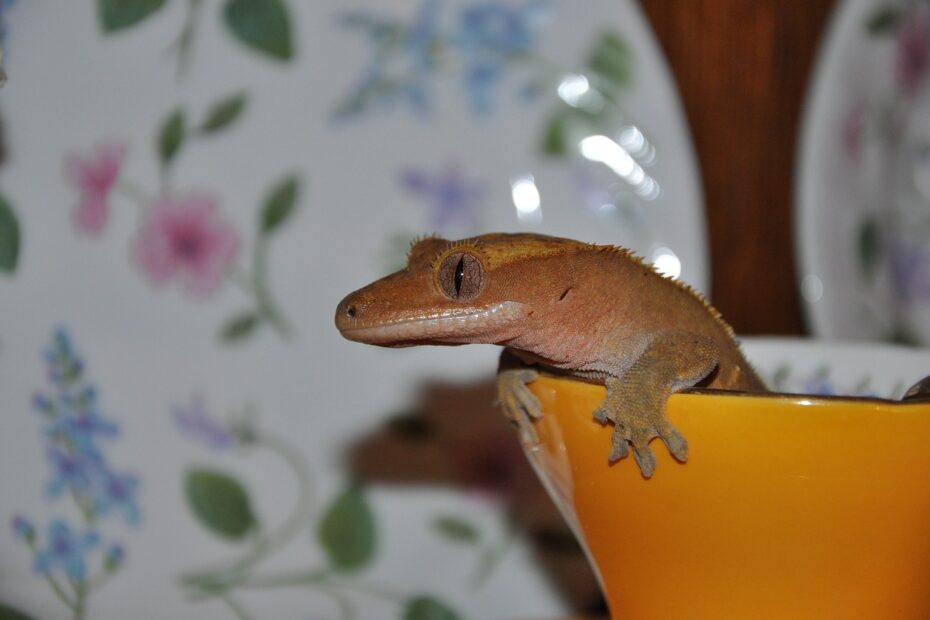Crested geckos (Correlophus ciliatus) are fascinating creatures known for their unique appearance and docile nature. As reptiles, they are ectothermic animals, which means they rely on external heat sources to regulate their body temperature.
Why Does My Crested Gecko Feel Cold? In their natural habitat, these geckos thrive in the warm and humid rainforests of New Caledonia. Therefore, providing the right temperature is crucial to ensure their well-being and overall health.
You may also want to read about the ideal habitat for a crested gecko.
Understanding Crested Geckos and Their Natural Habitat
2.1. What are Crested Geckos?
Crested geckos, also known as eyelash geckos, are small to medium-sized reptiles belonging to the family Diplodactylidae. They are named for the fringed crest of skin above their eyes, which resembles eyelashes. Crested geckos have become popular pets due to their low maintenance requirements and captivating appearance.
2.2. Native Habitat and Climate
In the wild, crested geckos inhabit the rainforests and islands of New Caledonia in the southwestern Pacific. This region experiences a tropical climate with warm temperatures and high humidity levels throughout the year.

The Importance of Maintaining the Right Temperature
3.1. Ectothermic Nature of Crested Geckos
Crested geckos are ectotherms, meaning they rely on the environment to regulate their body temperature. Unlike endothermic animals, such as mammals and birds, crested geckos cannot generate their own body heat.
3.2. Temperature Requirements for Optimal Health
Maintaining the proper temperature range in their enclosure is essential for crested geckos to perform vital physiological functions, including digestion, immune system function, and overall metabolic processes.
Why Does My Crested Gecko Feel Cold?
4.1. Lethargy and Reduced Activity
If a crested gecko is feeling cold, it may become lethargic and exhibit reduced physical activity. Instead of being active and exploring its surroundings, a cold gecko may spend more time hiding or staying still.
4.2. Change in Coloration
A cold crested gecko may display changes in its coloration. It may appear darker or duller than usual, which can be a sign of discomfort or stress.
4.3. Curling Up in a Ball
In an attempt to conserve heat, a cold gecko may curl up in a ball, tucking its limbs close to its body. This behavior is an adaptive response to feeling cold.
Providing a Warm and Cozy Enclosure
5.1. Choosing the Right Heating Equipment
Why Does My Crested Gecko Feel Cold? To create a suitable environment, it’s essential to choose the right heating equipment. The most common options include heat lamps, ceramic heat emitters, and heat mats.
5.2. Temperature Gradient Setup
Establishing a temperature gradient within the enclosure allows the gecko to move between warmer and cooler areas based on its comfort level and needs.
5.3. Monitoring the Temperature
Regularly monitoring the temperature inside the enclosure using thermometers ensures that it remains within the recommended range for crested geckos.
Avoiding Common Mistakes in Heating
6.1. Overheating Dangers
While providing warmth is essential, overheating the enclosure can be equally dangerous for crested geckos. High temperatures can lead to heat stress and other health issues.
6.2. Insufficient Heating
Conversely, insufficient heating can result in cold-stressed geckos, impacting their immune system and appetite.

Supplemental Heating Methods
7.1. Using Ceramic Heat Emitters
Ceramic heat emitters are effective in providing a continuous heat source without emitting light, which is ideal for the nocturnal crested geckos.
7.2. Heat Mats and Tapes
Heat mats and tapes can be utilized to warm the enclosure from below, simulating the heat emanating from the ground in the gecko’s natural habitat.
Lighting Considerations
8.1. The Role of UVB Lighting
UVB lighting is essential for crested geckos to metabolize calcium and maintain proper bone health.
8.2. Creating a Proper Light Cycle
Establishing a regular light cycle with appropriate photoperiods is crucial to mimic natural daylight changes.
The Role of Humidity
9.1. Understanding Humidity Requirements
Maintaining the right humidity levels is crucial for crested geckos, as it aids in shedding and hydration.
9.2. Humidity Regulation Techniques
Various methods, such as misting and providing a humid hide, can help regulate humidity in the enclosure.
Behavioral Changes in Response to Adequate Heat
10.1. Increased Activity and Exploration
When provided with optimal heat, crested geckos will display increased activity and engage in exploring their surroundings.
10.2. Healthy Feeding Habits
Adequate warmth encourages healthy feeding behaviors, ensuring the gecko receives proper nutrition.
Winter Cooling Periods
11.1. Mimicking Natural Seasonal Changes
Creating winter cooling periods helps stimulate natural behaviors and reproductive cycles.
11.2. Managing Cooling Periods Safely
Careful monitoring and adjustment of temperature during cooling periods are necessary to avoid stress or health problems.
Addressing Health Issues Related to Temperature
12.1. Dealing with Cold Stress
If a crested gecko experiences cold stress, prompt action should be taken to raise its body temperature and alleviate the stress.
12.2. Respiratory Infections
Cold temperatures can lead to respiratory infections in crested geckos, requiring immediate veterinary attention.
Conclusion
Why Does My Crested Gecko Feel Cold? In conclusion, providing the right temperature is paramount to ensure the well-being and health of your crested gecko. Understanding their natural habitat, temperature requirements, and signs of discomfort due to cold are crucial for responsible pet ownership. By creating a warm and cozy enclosure, monitoring temperatures, and addressing any issues promptly, you can create a comfortable and thriving environment for your beloved crested gecko.
Frequently Asked Questions
- Q: How often should I check the temperature in the enclosure? A: It’s advisable to check the temperature at least twice daily, once during the day and once at night, to ensure consistency.
- Q: Can I use a heat rock for my crested gecko? A: Heat rocks are not recommended for crested geckos, as they can cause burns due to uneven heating.
- Q: Should I use a heat lamp during the night? A: Crested geckos are nocturnal and do not require additional lighting during the night. It’s best to provide a dark and quiet environment.
- Q: Can cold temperatures lead to brumation in crested geckos? A: Yes, if the temperature drops significantly, crested geckos may enter a state similar to brumation, where their metabolic rate decreases.
- Q: What do I do if my crested gecko is showing signs of overheating? A: If you notice signs of overheating, immediately remove the heat source and provide a cooler area for the gecko to regulate its body temperature.
